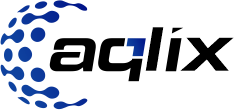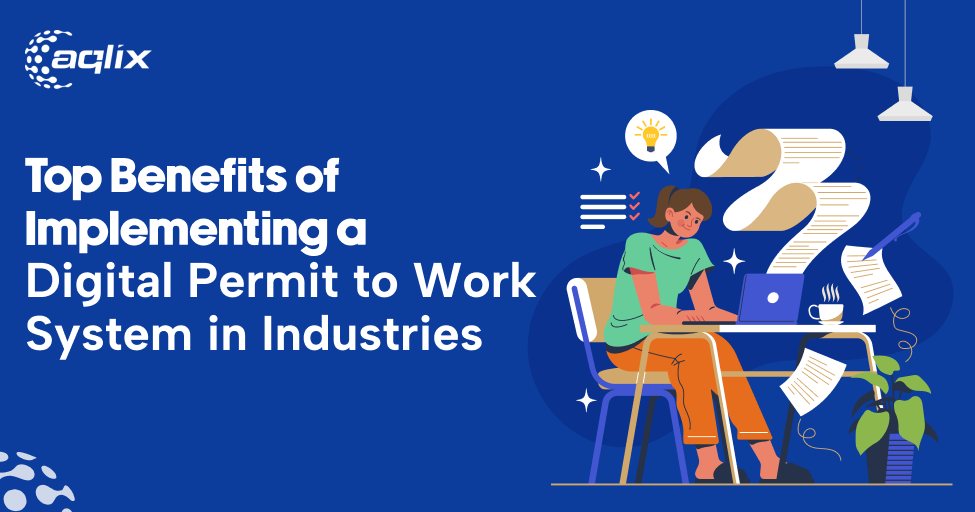Introduction
Workplace Health and Safety is still one of the most pressing topics for industries across the globe. Handwritten PTW systems—traditionally paper-based—have become a key element of managing high-risk activities. This is to ensure hazardous procedures, such as electrical work, hot work, and confined space entries, are adequately planned for, authorized, and watched over.
However, there are still many companies that find themselves struggling with classic ticket/workflow systems:
- Paperwork causes delays in approvals.
- Records can be lost or become error-prone, and audits are labor intensive.
- Safety lapses in information and communication tend to lead to accidents.
- It is difficult to monitor in real time, and it has the potential to cause an accident.
More than 40% of process accidents result from procedural failures according to industry estimates, and manual PTW systems can be an underlying contributor to these gaps. This is where a Digital Permit to Work (ePTW) system can be extremely useful.
The market leading EHS software provider Aqlix IT Solutions are bringing their innovative ‘PTW’ systems successfully into the New Zealand construction marketplace and utilising new technologies to ensure they remain at the forefront of user-efficiency, compliance and safety.
The benefits of ePTW systems

Enhanced Safety Compliance
Industrial safety management and its challenges One of the main remaining issues for industrial safety management remains regulation (OSHA, ISO, local security process). With manual PTW, you just can’t track compliance in real-time so there’s a risk for audits and even fines.
A PTW system that is digital automates verification lookups, audit trails for inspection – this can provide an easy mechanism to monitor that all work permits comply with industry standards. Compliance errors of up to 60% can be reduced in organizations, as examples from manufacturing factories with the use of digital PTW systems show.
Real-Time Monitoring
In manufacturing, oil & gas or construction industries danger can unfold in minutes. Legacy PTW systems are unable to minute by minute update so Supervisors cannot see potential risks.
ePTW systems provide real time communication and alerts to all parties. Foremen are notified in real-time about the progress of tasks, approvals and hazards, meaning all risk is managed by exception. This proactive oversight can cut workplace accidents by 35%, industry statistics show.
Reduced Human Error
Mistakes are still a primary factor in all industrial accidents. Manual permitting and inspection systems are heavily dependent upon thorough documentation and verification, providing plenty of opportunity for errors to be made. A missed signature, an incomplete form or a misfiled document can have severe repercussions.
By standardizing processes, checking for missing values, and automatically verifying input data, digital PTW solutions remove the potential for human error. This maintains a stable, safe approval process with minimal risk to operations.
Improved Documentation
If you have a paper-based process, there are hundreds of hurdles to retention, retrieval and creating meaningful reports. If the permits are lost or incomplete, conducting safety audits and investigations can also be delayed.
ePTW solutions, on the other hand, scan in everything, providing a central database available throughout departments. Reports can be created in real-time for audits, examinations, and safety checks. Document retrieval time can be reduced by as much as 70% according to industries that move from paper PTW to a digital system.
Cost Savings
Manual PTW procedures are labour-intensive that involve administration staff dealing with paperwork, permits, approvals and record keepings. Errors and delays translate into accidents, fines or downtime – increasing costs.
A digital PTW system will also simplify processes, decrease manual input and save time – with less people touching the process ultimately leading to cost savings. Research indicates that companies can save 20-30% of their operational cost every year if they get ePTW solutions in place.
Aqlix’s contribution to E-PTW Implementation
Aqlix IT Solutions focuses on the implementation of custom-built digital PTW systems with Oracle APEX and provides tailored solutions for manufacturers, health techs or retailers.
How Aqlix addresses pain points:
- Delays in approvals & disconnect: With Aqlix ePTW systems, there are real time dashboards and notifications.
- Human error & missing Docs: Automated workflows with validation checks and every single permit is complete.
- Compliance reporting: Pre-built, audit-ready report templates to maintain safety compliance with ease.
- Loss of productivity: When the system is integrated in the existing systems, there is minimal impact on the current flow of working process.
Through solving these challenges, Aqlix enables organizations to improve safety conditions on the work-site, minimize downtime and achieve operational cost reductions.
Case Study Example
Delayed Permit Approval At A Leading Manufacturer In Germany A Germany-based manufacturing plant underwent frequent delays in permit approval along with safety non compliance as they were using paper based PTW.
Challenges:
- Average time to issue permits: 3–4 days
- Delayed 2–3 hours to report incidents
- 15% of permits had incomplete records raised in compliance audits
Aqlix Solution:
- Adopted a tailor-built digital PTW system that was connected to the plant’s ERP.
- Facilitated live approval workflows, automatic verification and centralized documentation.
- Field supervisors were able to submit and track permits on-the-go due to the mobile-friendly interface.
Results:
- Time for permit approval now under 2 hours
- The speed of incident reporting was suddenly unparalleled, with response time reducing by 80%
- Compliance problems were below 2%
This is the difference Aqlix’s ePTW system makes to safety management, something that translates into safer, more efficient workplaces.
Conclusion
THE DIGITAL PERMIT TO WORK Anatomy of the incident is the need for a Digital Permit To Work, it’s no longer an added advantage but a must for those brands that preach safety by its obligations in both human error reduction and compliance efficiency. Conventional PTW procedures usually result in delays, mistakes and audit issues but ePTW systems solve these problems through live observation, automation and comprehensive documentation.
Aqlix IT Solutions creates bespoke scalable electronic PTW systems, which fit in perfectly with our customer’s processes and operations. Businesses implementing the above systems can not just protect their staff but also make real savings and operate more efficiently.
Start your journey to a safer, intelligent workplace today with Aqlix’s ePTW products.
FAQ
01. What is the Digital Permit to Work system?
The electronic PTW (ePTW) system is a computerised facility for controlling work with hazardous processes, replacing the paper permit-for-work systems used at most large facilities.
02. What kind of industries can be more facilitated by ePTW systems?
The manufacturing, construction, oil & gas, healthcare and retail sectors gain the most from high-risk activities and regulatory compliance.
03. How would Aqlix apply ePTW systems?
Aqlix tailors ePTW systems with Oracle APEX, and embeds them with platforms such as ERP, HR and safety to create an integration for non-stop workflows.
05. Can ePTW systems integrate with other safety management systems?
Yes. Aqlix’s products can connect with IoT sensors, incident reporting apps and workforce management systems for a comprehensive system of connected safety.
06. What sort of ROI can we expect from a digital permit-to-work solution?
EPTW solutions can help lower compliance issues by 60%, reduce operational costs by 20–30%, and enhance incident response time up to 80%.



